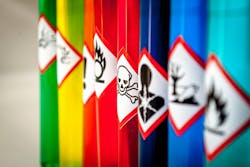Shuttering the Chemical Safety Board Will Endanger Workers and Undermine Safety
In a quiet but consequential move, the White House has announced plans to eliminate the U.S. Chemical Safety and Hazard Investigation Board (CSB) by October 2026.
While the agency may be small, employing fewer than 50 people, its absence would leave a gaping hole in the country’s ability to investigate and prevent catastrophic industrial accidents. The CSB's unique, independent role in analyzing chemical disasters has protected frontline workers, informed regulatory reforms, and saved countless lives. Its closure threatens to reverse decades of hard-earned safety progress.
A Unique Watchdog for Industrial Disasters
Unlike the Occupational Safety and Health Administration (OSHA) and the Environmental Protection Agency (EPA), which focus on enforcing regulations and issuing penalties, the CSB has no enforcement authority. Instead, it conducts independent, non-punitive investigations into the root causes of major chemical incidents, often uncovering organizational failures, engineering oversights, and systemic weaknesses that other agencies miss.
This approach allows for transparency, deeper technical scrutiny, and broader collaboration with stakeholders, including unions, industry experts, and safety advocates. After the 2008 Imperial Sugar refinery explosion that killed 14 workers, for example, the CSB's findings on combustible dust hazards led to changes in NFPA safety standards and OSHA emphasis programs, protecting thousands in high-risk industries.
Investigations That Save Lives
The elimination of the CSB would significantly weaken the nation’s capacity to prevent future chemical disasters. While OSHA and the EPA will continue regulatory enforcement, they lack the CSB's technical depth and investigative scope. Their mandates focus on violations of existing rules, not the broader systemic failures that lead to those violations.
The 2010 Tesoro Anacortes refinery explosion is a case in point. CSB investigators discovered that high-temperature hydrogen attack (HTHA) caused the failure of a heat exchanger, a complex metallurgical issue that had been overlooked due to gaps in hazard assessment and inspection protocols. This insight resulted in important updates to industry guidelines. Without the CSB, such in-depth root-cause analysis would likely fall through the cracks.
Silencing a Voice for Workers
One of the most troubling aspects of the CSB’s potential dissolution is the silencing of an unbiased, non-punitive platform that elevates worker voices. Because the CSB operates outside the enforcement ecosystem, it encourages candid input from labor unions and frontline workers who might otherwise remain silent due to concerns about retaliation or disciplinary consequences.
CSB reports, such as its landmark investigation into the 2010 Deepwater Horizon disaster, reveal more than just technical errors. They expose how poor safety culture, inadequate training, and flawed decision-making contribute to large-scale tragedies. These insights have been crucial for labor advocates pushing for reforms in hazardous industries. Without the CSB’s findings, they lose a vital tool for driving systemic change.
The Cost of Losing Transparency and Technical Rigor
The CSB has also distinguished itself through its commitment to public education. Its investigation reports, safety videos, and animations are widely used by industry, academia, and safety professionals to train workers and prevent future incidents. For example, after the 2013 West Fertilizer Company explosion that killed 15 and leveled parts of a Texas town, the CSB’s analysis revealed failures in zoning laws, storage practices, and fire code enforcement—insights that led to improvements in the EPA’s Risk Management Program.
Without this level of scrutiny, the nation risks losing the ability to learn from past failures. Complex, long-developing hazards, like aging infrastructure, management system weaknesses, or overlooked chemical incompatibilities, may remain hidden until tragedy strikes again.
Filling the Void: Imperfect Substitutes
Although no internal system can fully replace the CSB’s oversight, companies can bolster their own safety practices to close the gap. Modern software platforms, especially those powered by AI, can help safety teams detect and respond to hazards more effectively. Tools that use natural language processing to identify potential Serious Injury or Fatality (pSIF) events are becoming more common, helping organizations uncover hidden risk patterns from incident narratives and near misses.
These platforms offer clear advantages:
- Proactive identification of high-risk scenarios.
- Reduced triage time for incident reports.
- Enhanced cross-site learning and standardization.
- Improved visibility into lagging and leading safety indicators.
Still, these tools depend on internal discipline, robust data inputs, and a strong safety culture. They can augment but not replicate the impartial, national lens the CSB provides.
What Safety Professionals Must Do Now
As a certified industrial hygienist might warn, the absence of the CSB means subtle danger signals may go unnoticed, like undocumented near misses, deteriorating equipment, or procedural workarounds that reflect deeper systemic issues. Employers must now take an even more proactive stance.
Best practices include:
- Conducting frequent Management of Change reviews
- Engaging safety committees with members from multiple roles and departments to uncover potential blind spots
- Implementing competency and control verification programs
- Building comprehensive internal audit systems
- Prioritizing preventive maintenance and emergency preparedness
A Call to Action for the Private Sector
While safety professionals in the private sector cannot replace the CSB, they must step up to ensure that its absence doesn’t result in a slide backward. This includes sharing internal findings, adopting best-in-class risk management tools, and collaborating with industry groups like the Center for Chemical Process Safety (CCPS) and the American Society of Safety Professionals (ASSP).
Ultimately, the responsibility for worker safety lies with employers, and the potential shuttering of the CSB only amplifies that obligation. The lessons uncovered by CSB investigators over the years are etched in lives lost and disasters narrowly avoided. Without it, our ability to learn from the past and prevent the next industrial catastrophe is dangerously diminished.
About the Author

Kristi Hames
Kristi Hames is a Certified Industrial Hygienist (CIH) and Certified Safety Professional (CSP) at VelocityEHS.
She has over 20 years of experience in workplace health and safety. She leads the vision, strategy, and performance of Chemical Management and Industrial Hygiene software solutions, focusing on innovation, business growth, and enhancing customer experience and retention.
Previously, she managed global industrial hygiene and ergonomics programs for a Fortune 500 specialty chemical company, developing and implementing strategies to mitigate workplace hazards across diverse environments.
